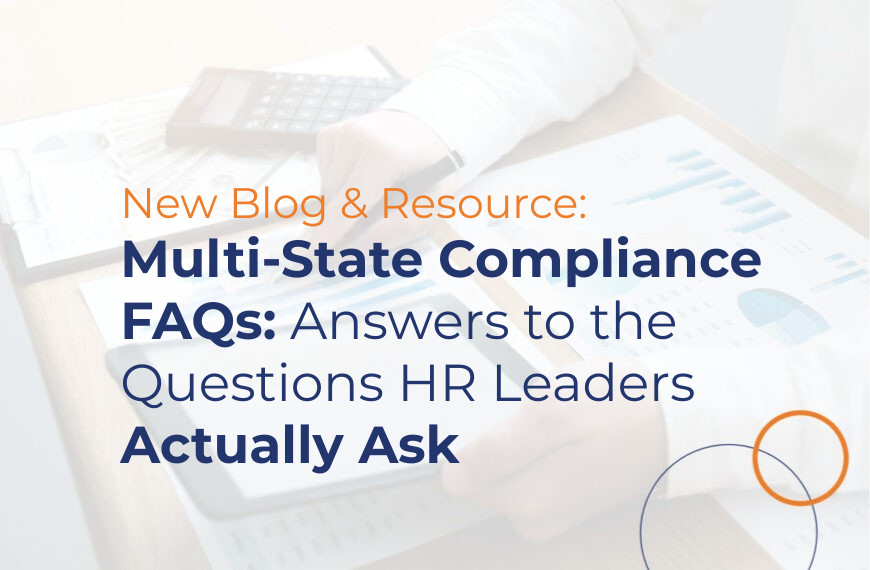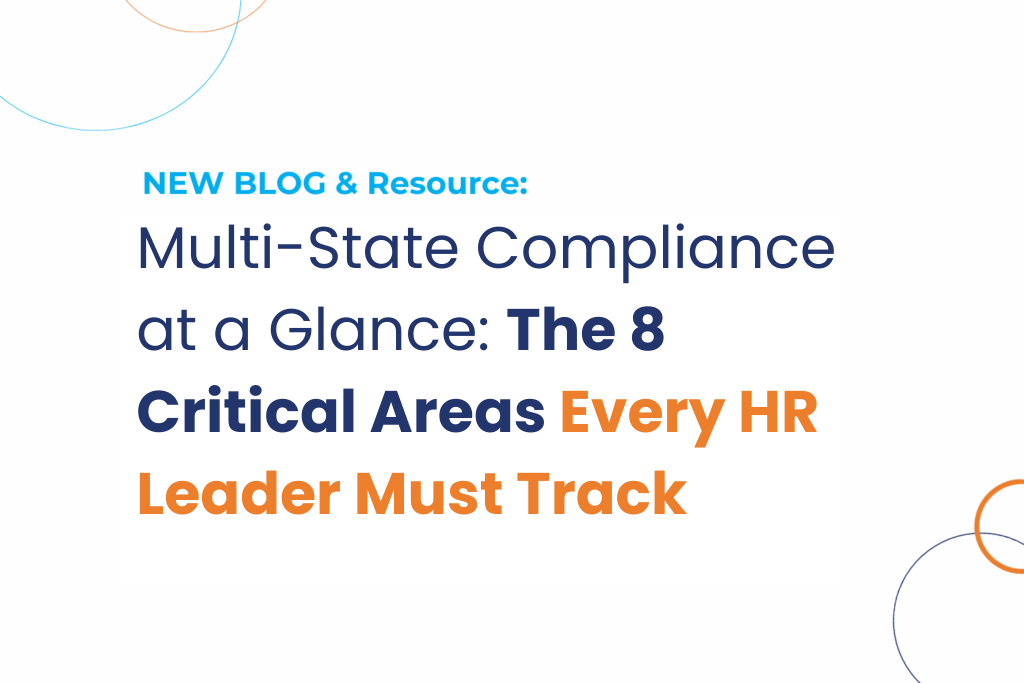The Latest HR Updates on PPP Loans and Employee Retention Tax Credits

Could your organization use some pandemic assistance? Would you qualify for PPP loans and/or the Employee Retention Tax Credit? MP’s HR services team offers the latest HR updates on these programs, as well as how to use them to your full advantage. To provide deeper clarity, our HR consulting team answers some of the common questions asked about this program.
The Latest HR Updates on PPP Loans
PPP loans can be a significant infusion of cash, especially because obtaining full or partial forgiveness is becoming easier and easier. With some strategic planning and perhaps HR consulting or payroll services, companies could receive full forgiveness of their PPP loans. This article will cover the First and Second Draw programs, especially eligibility requirements and how funds can be spent.
The Latest HR Updates on the First Draw PPP Loan Program
The application window on this program opened on January 11th, 2021. Right now, not all lenders will be participating. Only community financial institutions. Other lenders can start applying to participate this week. The average loan given out will be 2.5 times the average monthly payroll of the borrower, maxing out at up to $10 million (with the maximum per employee being $100 thousand. (To calculate payroll costs, employers can use figures from 2019, 2020, or the previous 12 months from when they apply.)
There have been a few changes with this round of PPP loans. Firstly, funds can now be used on an expanded list of allowable expenses, including cloud computing software and employee protections like PPE (Personal Protective Equipment) and plexiglass barriers. (It’s still unclear as to whether employers with previous PPP loans can use their funds on this expanded list of allowable expenses. Guidance to come.) The eligibility requirements are also different on this round of loans. Employers must:
- Have 500 or fewer employees (Accommodations and Food Service companies can have fewer than 500 at each location)
- Not have participated in the first PPP program or didn’t accept the full amount they were eligible for.
The Latest HR Updates on the Second Draw PPP Loan Program
This program is for applicants who don’t fit into the First Draw PPP Loan Program. The maximum amount for the loan is 2.5 times monthly payroll costs or 3.5 times monthly payroll costs for industries like Accommodations and Food Services. Loans will be no higher than $2 million total.
The application window opened on January 13th, 2021 and for now is handled only through community financial institutions. To qualify, employers must:
- Have less than 300 employees (for some industries like Food Services and Accommodations, it can be counted as less than 300 employees per location).
- Have used all the monies in their first PPP loan. Note that this doesn’t mean they need to have filed a forgiveness application.
- Be able to show a 25% or greater decline in gross receipts from 2019-2020 (this can be either by year or by quarter, whatever is most advantageous)
Some Common Questions and Answers about PPP Loans
Q: If a business had a 25% reduction in year-over-year revenue comparison for only one quarter, but otherwise had slightly greater revenue in 2020, will they be eligible for a PPP loan?
A: Yes. If this business can find a quarter in 2019 where gross receipts were 25% higher than that same quarter in 2020, they do qualify. This is true even if the other quarters didn’t have reduction in revenue.
Q: What qualifies as a “full or partial disruption to operations?”
A: At the simplest form, if more than a nominal portion of a company’s business operations are suspended by a governmental order, that would qualify. Some examples are restaurants. Though in many cases they were forced to stop indoor dining, restaurants could continue to do takeout and delivery. That qualifies as a nominal portion of business operations being suspended. To extend that example, restaurants in 2021 can be open for inside dining, but capacity is limited to 25 or 50 percent. That’s still more than a nominal portion of suspended business operations. It’s a mandated reduced capacity. An example of what wouldn’t count is if a restaurant had no social distancing restrictions and could operate at 100% capacity indoor and with take out. If the general public is nervous about coming into the restaurant, and there are losses, that wouldn’t qualify.
Q: Does the $100,000 cap on annual salary include other payments, such as bonus figures?
A: Yes. You can’t reflect more than $100,000 in any sort of renumeration to any one employee.
Q: I haven’t filed the forgiveness application for my first PPP loan yet. Do I need to do that before applying for another PPP loan?
A: No, you don’t. You are fine to apply for a second PPP loan if you spent all the money (on allowable expenditures) of your first PPP loan.
Q: What employer paid benefits can you include in your calculations?
A: Health insurance, dental insurance, vision insurance, disability insurance, and life insurance are all now allowable expenses.
Q: What is the period for the 2.5 times monthly payroll measure?
A: Take an average of either the calendar year 2019, the calendar year 2020, or the 12 months immediately preceding when you’re filing for the loan. You have until the end of March to apply for the Second Draw PPP program. Note that there is a chance that the program could end prematurely if all the funds are accounted for and disbursed before you get a chance to apply.
The Latest HR Updates on the Employee Retention Tax Credit (ERTC)
The Employee Retention Tax Credit (ERTC) is now more widely available to employers than it was last year. Many employers who didn’t qualify in 2020 (because they took a PPP loan) will now qualify for 2021 and 2020 retroactively. Organizations who keep up with details of this program could be walking away with thousands towards their taxes, or potentially even a huge refund. To be eligible, employers must:
- Be able to show a gross receipts decline of 50% in 2020 in any given quarter. If there’s a quarter during which the organization returns to 80%, they stop being eligible at that point. For eligibility to claim an ERTC in 2021, an organization only needs to be able to show 20% gross receipts decline.
- Gross receipts are all the revenue in any forms it was accrued or received from any sources. This includes the sales of products or services, interest, dividends, rents, royalties, fees, commissions, etc. as they were reduced by rents or allowances. Gross receipts are the “total income” (or “gross income” in the case of a sole proprietorship) plus the “cost of goods sold.” Internal Revenue Service (IRS) tax return forms such as Form 1120, Form 1120S, Form 1065, and Form 140 all define gross receipts. Note that gross receipts do not include net capital gains or losses, taxes collected for and remitting to a taxing authority if included in gross or total income, such as sales or other taxes collected from customers and excluding taxes levied on the concern of its employers. PPP funds should not be counted towards gross receipts, either.
- Employers may use the preceding quarter if it’s advantageous. If they want to claim the ERTC in the first quarter of 2021, for example, they can show a loss in the fourth quarter of 2020.
When claiming their Employee Retention Tax Credit, employers will notice a difference in 2020 and 2021 requirements.
- The definition of “large employer” is different for 2020 vs. 2021. For 2020, organizations with 100 or more full-time employees (workers who put in 30 or more hours a week of service) are considered “large employers.” For 2021, employers with 500 employees or more count as a “large employer.” Small employers can claim credit on any qualified wages paid. Large employers can only claim credit on employees who are paid but not working. Note that paid is an important designation. Workers who were furloughed, but still had their group health insurance, count as “paid.”
- For 2020, employers can claim 50% of a full-time employee’s wages, up to a cap of $5,000 per head, for the whole year. For 2021, employers can claim 70% of a full-time employee’s wages, up to a cap of $7,000 per head, for both the first and second quarter. That’s $14,000 per full-time employee total for the year.
Some Common Questions and Answers about the Employee Tax Retention Credit
Q: How do we go about applying for Employee Retention Tax Credit? How does the credit from the payroll company work?
A: As of this afternoon, the IRS (Internal Revenue Service) has still not provided guidance for how to retroactively claim the ERTC for 2020. Many people are assuming it’ll be via an amended 941 Form, your quarterly payroll tax filing form. However, there’s still a chance that the IRS could usher in some way to claim it in the current year or the current quarter. In terms of the 2021 program, you will be able to claim that via payroll. For those who are MP clients and using iSolved, we’re currently testing out an ERTC functionality. You’ll be able to enter in the relevant information to adjust your tax liabilities accordingly and take advantage of this program.
Q: How do I determine my employee count for Employee Retention Tax Credit purposes?
A: Take your employees who average 30 or more hours per week and/or 130 hours per month for each month of 2019. Divide by 12. If you’re a newer business and opened in 2019, but weren’t in business as of January 1st, you should calculate an average of the full months that you were in operation in 2019. Similarly, if you didn’t open until 2020, you’d want to use the month you were fully in business in 2020.
Q: Can you not claim the 2020 Employee Retention Tax Credit if you use your 2020 PPP loan proceeds to pay payroll?
A: You just can’t claim the ERTC for the same exact time periods. If, for example, you’re claiming an ERTC for November and December of 2020, use PPP funds to pay wages for other months. You can’t overlap, paying PPP funds for wages that you claim for the ERTC for during the same quarters.
Q: What if my Employer Retention Tax Credit, once I calculate it, exceeds my actual tax liabilities?
A: The ERTC is a refundable credit. So, should the amount of your credit exceed your tax liabilities, you will get a refund from the IRS. If you need an advance on that, you can fill out what’s called Form 7200. It’s an IRS form that will help you get those monies sent to you early.
Q: Should PPP funds received be added to gross receipts income?
A: No. You do not have to count money you used PPP funds to pay wages to on your gross receipt income.
Want more of the latest HR updates on PPP loans, the COVID vaccine, and the ERTC? Listen to part 1 of our webinar series.
Or, read part 1 of our series on legislative and compliance updates.
Recent Posts
- Multi-State Compliance FAQs: Answers to the Questions HR Leaders Actually Ask
- Why Generic HR Systems Fail Professional Services — And What to Do Instead
- Part 3 – How to Build a Scalable Multi-State Compliance Strategy That Actually Works
- Part 2 – 5 Compliance Blind Spots That Could Cost You Big in 2025
- Infographic – Multi-State Compliance at a Glance: The 8 Critical Areas Every HR Leader Must Track
Categories
- ACA (10)
- AI (6)
- BizFeed (6)
- Business Strategy (120)
- COBRA (5)
- Compliance (250)
- COVID-19 (92)
- Diversity (12)
- eBooks (19)
- Employee Engagement (33)
- Employee Handbooks (24)
- ERTC (29)
- FFCRA (7)
- HR (312)
- MP Insider (13)
- Payroll (170)
- PFML (9)
- PPP (24)
- PTO (5)
- Recruiting (54)
- Remote Work (39)
- Return to Work (32)
- Unemployment (1)
- Wellness (22)
Archives
- November 2025
- October 2025
- September 2025
- August 2025
- July 2025
- June 2025
- May 2025
- April 2025
- March 2025
- February 2025
- January 2025
- December 2024
- November 2024
- October 2024
- September 2024
- August 2024
- July 2024
- June 2024
- May 2024
- April 2024
- March 2024
- February 2024
- January 2024
- December 2023
- November 2023
- October 2023
- July 2023
- June 2023
- May 2023
- April 2023
- March 2023
- January 2023
- December 2022
- October 2022
- September 2022
- August 2022
- July 2022
- June 2022
- May 2022
- April 2022
- March 2022
- February 2022
- January 2022
- December 2021
- November 2021
- October 2021
- September 2021
- August 2021
- July 2021
- June 2021
- May 2021
- April 2021
- March 2021
- February 2021
- January 2021
- December 2020
- November 2020
- October 2020
- September 2020
- August 2020
- July 2020
- June 2020
- May 2020
- April 2020
- March 2020



